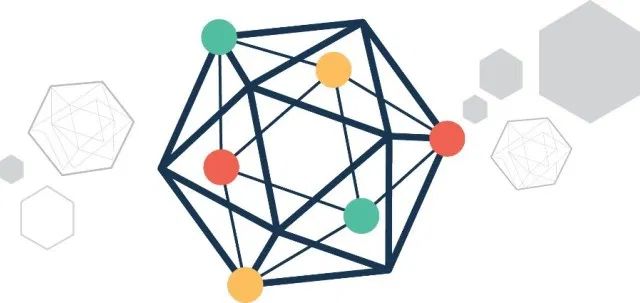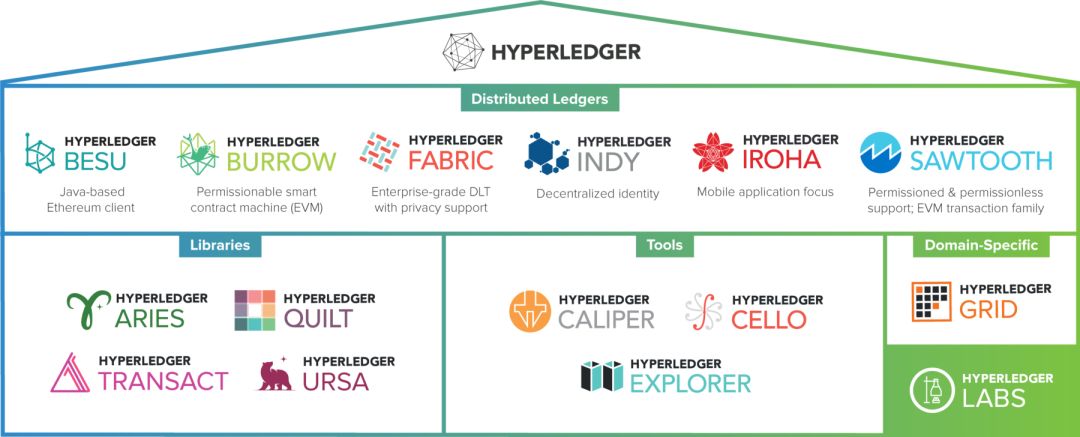I understand the super-book DLT, library, development tools, how many members of the Hyperledger family do you know?
Now that the blockchain is becoming more and more mature, it is time to take a deeper look at what the members of the big family, Hyperledger, have. What are the characteristics?
Let's take a look at what Shawn Gordon, a senior developer on Hackernoon, said.

At that time, I was cynical and self-righteous. I thought they just wanted to occupy this constantly evolving technology field. Since then, I have started using Fabric and have studied Sawtooth and Iroha seriously, but Fabric is not the right solution, and Sawtooth and Iroha are not ready.
- Market Weekly | Market recovery last week lost ground, countries have frequently regulated the blockchain industry
- Opinion | a16z: Libra should give up a basket of currencies, only anchored with the dollar
- Marching to China! Entering China has become a consensus in overseas mining circles | International Mining Summit
With the release of Besu's new announcement, I think this may be an interesting time to run various technologies under the Hyperledger architecture.
In essence, Hyperledger can be divided into three categories: distributed ledger technology (basically blockchain), libraries, and tools . Next, we will introduce them in the above order, and look carefully.
Distributed ledger technology

DLT
Besu is the latest tool from ConsenSys, known as Pantheon. It's very interesting. It's a Java-based Ethereum client that implements the Ethereum Virtual Machine (EVM), which supports licensing networks and public networks, including test networks such as Ropsten, Rinkeby, and Görli.
The consensus algorithms supported by Besu include Workload Proof (PoW), Proof of Authority (PoA) and IBFT2, which is a p2p-based protocol. Besu includes web sockets, HTTP, and command line interfaces for working and interacting with the Ethereum network and supporting smart contracts.
Besu address: https://www.hyperledger.org/projects/besu
Burrow is a modular blockchain client that includes a licensed smart contract interpreter that was developed in part using the Ethereum Virtual Machine (EVM) specification to run EVM smart contracts. It leverages Tendermint to prove the consensus engine.
Tendermint address: https://tendermint.com/
The project has a high transaction throughput commitment, so organizations can build EVM smart contracts based on this and deploy them locally. To be frank, this project doesn't seem to have made much progress in the past year, and most of the updates on github seem to be irrelevant, and I haven't studied it carefully.
Burrow Address: https://www.hyperledger.org/projects/hyperledger-burrow
Fabric is probably the most important project in the Hyperledger system. It's very powerful, it's running, and it's very versatile. Fabric is a licensed enterprise-class DLT framework with a modular design that is flexible in use. I have used it myself in the game market and it has indeed been amazing.
Basically, you can deploy your own blockchain on your own computer and control costs and the environment.
Fabric Address: https://www.hyperledger.org/projects/fabric
Indy is quite interesting. It provides a self-sovereign identity ecosystem based on distributed ledgers that attempts to build a blockchain storage identity system that can be used across other software systems. I really like this idea, and it seems to be actively developing.
Indy Address: https://www.hyperledger.org/projects/hyperledger-indy
Iroha is also very special. I thought about it in a game project a year ago, it could have been perfect, but at that time, it was far from perfect. It is designed to manipulate accounts and digital assets through a small set of quick commands and queries.
The verification node can use the Gossip protocol to distribute semi-signed transactions as part of a multi-signature transaction. When the ledger state is stored in PostgreSQL, the chunks are stored in the file. If you think about divergent thinking, there are boundless possibilities for this project.
Iroha address: https://www.hyperledger.org/projects/iroha
Sawtooth was another technology project that I considered for my gaming platform last year, but at the time, it was not the right model we wanted to make, which is why we finally chose Fabric. It originally used the " Proof of Elapsed Time " consensus algorithm, and it requires some Intel software running on the computer to manage it, but now you have a variety of options such as RAFT and PBFT.
The real benefit of Sawtooth is that it can write smart contracts in multiple languages, which reminds me of Dragonchain. Sawtooth can execute Ethereum smart contracts through SETH (Sawtooth/Ethereum). If you are considering deploying a licensed blockchain, then Fabric and Sawtooth are worth a look.
Library
Aries is based on a blockchain peer-to-peer interaction infrastructure. It's not a blockchain, it's not an application, and it's not in use. The goal is to provide peer-to-peer interaction, cryptographic management, verifiable information exchange, and secure messaging services for different decentralized systems.
It is linked to the Hyperledger Indy project and the Ursa project. Some of these ideas are very interesting, but they are not yet operational.
Aries address: https://www.hyperledger.org/projects/aries
Hyperledger Indy project: https://www.hyperledger.org/projects/hyperledger-indy
Ursa project: https://www.hyperledger.org/projects/ursa
Quilt provides the ability to interoperate between different ledger systems using the Interledger Protocol, which is typically used in payment scenarios. This library is used for value transfer between the ledger systems by providing atomic exchange that even supports non-blockchain systems.
Looking at Git, the project seems to be being actively researched, and it is a good thing for those who need it.
Quilt address: https://www.hyperledger.org/projects/quilt
Transact is a very new project, not even a Git project for it. The idea is to create a standard interface for executing smart contracts that is abstracted from the actual distributed ledger implementation.
The reason I like this idea is that it simplifies the entire smart contract process and exposes it to other languages. Although it is not quite sure which step it is going to take, the guy behind it is very determined. This is also a project you should always consider in development.
Transact address: https://www.hyperledger.org/projects/transact
Ursa is a shared encryption library designed to avoid duplicate encryption (allowing people to use the same library) while also aiming to improve security. It is built using C and Rust and has a glorious mission to reduce redundancy. It's hard to see how it's developed and widely used from Git, but it's still far from the release of version 1.0, and hasn't released a new version since April 2019.
Ursa address: https://www.hyperledger.org/projects/ursa
tool
Caliper is a performance measurement tool that measures the performance of a particular blockchain implementation in a predefined use case. It generates reports with multiple performance metrics, such as TPS (Transactions Per Second), transaction latency, resource utilization, and more.
This is a very useful tool that will let you know how the technology is implemented and where it may need to be improved. According to Git, it is very effective in many Hyperledger projects.
Caliper address: https://www.hyperledger.org/projects/caliper
Cello introduces a blockchain of on-demand "service-as-a-service" deployment models, making it easier to create, manage, and stop blockchains. It provides multi-tenant chain services on a variety of infrastructures such as bare metal, virtual machines and containers.
This is a bit like Docker Swarm or Kubernetes, except that it is used in the blockchain. This project is often used in conjunction with the Hyperledger Explorer resource manager.
Hyperledger Explorer Resource Manager: https://www.hyperledger.org/projects/explorer
As of August 2019, the Composer project (https://www.hyperledger.org/projects/composer) has been deprecated in view of Fabric 1.4+. Although this makes a lot of things more convenient to handle, I am still very surprised, after all, I used it often last year.
Cello address: https://www.hyperledger.org/projects/cello
Composer project: https://www.hyperledger.org/projects/composer
Explorer is a user-friendly web application that can view, recall, deploy or query blocks, transactions and related data, network information, chain codes and transaction families, and other relevant information stored in the ledger. If you work in the Hyperledger world, this is an app that can be friends with you and is very popular with everyone.
Explorer address: https://www.hyperledger.org/projects/explorer
Finally, Grid is the framework for building a supply chain solution. I am not going to explore it in depth, this is a collection of frameworks and libraries to build a supply chain together. If you are paying attention to the supply chain, then take a look, but it is not ready for the gold phase.
Grid address: https://grid.hyperledger.org/
After reading this article, you should have learned some very interesting projects, some of which are available in real time, while others are not. I really like what is happening in the Hyperledger universe, and it's definitely worth a look.
We will continue to update Blocking; if you have any questions or suggestions, please contact us!
Was this article helpful?
93 out of 132 found this helpful
Related articles
- US Treasury Secretary: Visa, PayPal, etc. withdraw from Libra because they have not yet reached regulatory standards and are worried about government action
- Before Zuckerberg attended the hearing, the five major Libra members, including Visa and MasterCard, withdrew
- Why did you not disclose the blockchain layout when you squeezed out the US group that Baidu promoted the ATM combination?
- Perspectives | Agreement as a coordinator of value minimization
- The Libra Association will hold its first board meeting with up to 1,500 participating entities
- Joseph Lubin: How do you get to the decentralized internet?
- Intimidating + provocative, the giants left the story behind Libra




